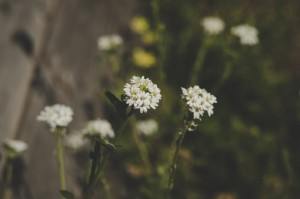Birth and death are the two indisputable experiences that we share as humans. Each person has entered the world from the womb and will one day die. We join the world screaming, unaware of self and others and begin, well … being. It is a bright time brimming with possibility. There is a middle, where we are now, and where we focus most of our attention. And then there is death – a universal reality. Heavy, dark, and mysterious.
Despite the hard facts of the life cycle, the way we approach death varies greatly. I wish that I could tell you “There is one way that humans deal with death. Pay attention and I’ll give you the steps to avoiding the pain that accompanies it.” Much to my disappointment, and I’m sure yours as well, that just isn’t the way death works and that is not the direction this article is going.
Consider your own thoughts about death. Probably different from a six-year old’s, right? A six-year-old may realize that when a person dies they will no longer be around, but perhaps the complexity in which they understand the death will develop at a later age.
 Similarly, the emotional response to death, known as grief, is different from person to person. Age, environment, and religious beliefs are key factors in an individual’s narrative of death (experiences with death, the meaning of death, and thoughts of how to handle death).
Similarly, the emotional response to death, known as grief, is different from person to person. Age, environment, and religious beliefs are key factors in an individual’s narrative of death (experiences with death, the meaning of death, and thoughts of how to handle death).
Within grief we often look for stages to mark movement, growth, and healing. But before considering what stages a person goes through when confronted with death, it is important to zoom out and consider broad cultural approaches.
Three General Responses to Death
Globally there are three general responses to death: defying, accepting, and denying. Learning from these three attitudes can help us gain understanding about the relationship between death and grief, the stages within, and what exactly we can do with it.
Defying
Death-defying is challenging of the finality of death. We can look to ancient Egypt as an example of a culture embracing death-defying. The people of early Egypt would spend their entire lives preparing to defy death and embrace immortality. In order to reach the desired destination in the afterlife and truly defy death, a person had to spend their life doing good deeds and readying themselves.
They believed that when a person died, their soul separated from the body and started a perilous journey in the afterlife. The tools and resources available to them on this journey depended on how a person lived and the details of their burial. Becoming immortal was not easy or simple. It was only really an option for the wealthy elite members of society.
 The elaborate tombs that served as a resting place for a person’s soul were constructed over several years. Some were as large as 481 feet tall and requiring 2.3 million stone blocks. We of course know these tombs as pyramids. Apart from the spectacular achievements of construction to provide security in the afterlife, specific rituals were also performed by high priests.
The elaborate tombs that served as a resting place for a person’s soul were constructed over several years. Some were as large as 481 feet tall and requiring 2.3 million stone blocks. We of course know these tombs as pyramids. Apart from the spectacular achievements of construction to provide security in the afterlife, specific rituals were also performed by high priests.
Once a body was properly prepared, a large group of people consisting of dancers, priests, musicians, and family members would accompany the body to the tomb where final rituals were practiced. Food, clothing, and valuable possessions would be placed in the tomb for the journey to the afterlife. If everything was done properly, a person may live forever and defy death.
Accepting
Death-accepting is acknowledging death as a natural part of the life cycle. Cultures that practice death-accepting integrate death into daily life, often talking about death and how all living things die. I had the opportunity to personally experience this approach to death while living on an island in the South Pacific.
When a coworker unexpectedly died, I watched the community respond without much prompting. There was certainly surprise and deep sadness, but also an undercurrent of shared understanding; death in all forms was expected.
The community stepped into action, supporting the family, men and women gathered to mourn, food was prepared, friends visited, stories were told, and their death was discussed freely. This process continues with rituals for a year after the death. In everyday activities, it was not uncommon for people to discuss death.
Denying
Swinging in the opposite direction, death-denying is a rejection of death, believing that it is not a natural part of existence. Our culture may be the best example of this. Within the United States, few rituals exist around death. Of course, there are cultural variations of dealing with death within our country as we are comprised of many different traditions and cultures.
 In general, there may be a memorial service or ceremony where family and friends gather. Black clothing may be worn, pictures may be shared, food is offered, and people may pray. We do not have much conversation about death and all events around a death have a certain “hush-hush” mentality.
In general, there may be a memorial service or ceremony where family and friends gather. Black clothing may be worn, pictures may be shared, food is offered, and people may pray. We do not have much conversation about death and all events around a death have a certain “hush-hush” mentality.
Again, various practices may include more rituals to cope with and discuss death but, in general, Americans do not continually engage with thinking, preparing for, and talking about death. As a result, many experts suggest that Americans have difficulty dealing with death.
I have found that many people feel uncomfortable approaching the subject of death, fearful perhaps of offending or causing pain by broaching the subject. Or maybe we simply do not know how to talk about the harsh reality. We use euphemisms to reduce the emotional response by saying we “lose” someone, they “pass away.” or “pass on.”
We encourage people to “be brave” and if they are expressing sadness, we try to find ways to cheer them up. If a person is showing sadness or having difficulty carrying out their day-to-day tasks as they did before the death, we evaluate their coping as “not doing too well.” We distance ourselves from anyone or anything that may remind us of death. This may be limiting our ability to effectively cope with death.
Our daily routines seldom force us to face death. We rarely hear people discussing or expressing grief and are removed from daily witnessing the cycle of life and death and life. In addition, we as a population have the privilege of living longer lifespans than we ever have before and are able to prolong the urgency to consider mortality. This also factors into progressing away from interdependency in our society and we grow more distant from common rituals around death that help express feeling and guide behavior.
 So now that we’ve taken a look at the big global picture of cultural approaches to death, let’s look through a smaller lens; the individual experience with death. The way people attempt to ease the shock of death is through mourning and/or grieving.
So now that we’ve taken a look at the big global picture of cultural approaches to death, let’s look through a smaller lens; the individual experience with death. The way people attempt to ease the shock of death is through mourning and/or grieving.
As previously discussed, nearly all religions and cultures have their own traditions and rituals to mourn and grieve the death of a loved one. They may be precise or nebulous, but they exist in order to propel life onward after a death. How an individual processes death, however, may be very different from person to person.
When I speak with people who are grieving, they sometimes want to know what stage of grief they are in (or would like me to confirm what stage they think they are in) and how long they should be there. They are looking for a “How to” guide to grieving. I empathize with this in my own times of dealing with grief; I desperately wanted to know the way out of my pain.
There are the widely accepted stages of grief, including shock, denial, bargaining, guilt, anger, depression, and acceptance, based on research from the 1960’s. Recent research, however, suggests that people do not bounce through these seven stages like they are working their way through an instruction manual.
Knowing that stages exist may be helpful and a person may very well experience the various stages, but in no particular order or time frame. There is no set way that people grieve and more importantly, there is no “correct” way to grieve.
Okay, so we struggle as a society to deal with death but there isn’t a roadmap of how to do it right? How do we approach death in a healthy, healing way? Maybe we can take a lesson from each approach to death outlined in this article. When I look at defying, accepting, and denying, I see similarities between all three. They all revolve around community and how that community handles death.
We do know that we not do well with pretending like it does not exist. It is important to recognize this reality. We also know that death may be disorienting. While we are spinning around, dizzy with the weight of death, it is common to look to the people around us for stability.
If our community gives us a message that we “should be” a certain way and we are not meeting those standards, it often leaves us feeling worse and distancing ourselves from things that may be helpful.
If you are not currently dealing with death and grief, consider these questions: What comes to mind when you hear the word death? Where does that image or thought come from? What emotions come up? When were you first aware of death? Reflect on those questions and how your responses influence the way that you approach others who are grieving.
If you are currently processing death, seek support. Whether that is opening up to a friend or seeking counseling, find a warm space to just be in the “stage” that you are in and allow yourself to heal at your own pace. Often the therapeutic relationship within counseling provides the necessary support to process grief.
Licensed professionals have studied what you are going through, have sat with a number of people who are grieving, and are ready to understand how you are personally experiencing grief. We have all entered the world the same way and, in one way or another, we will all face death. I am here to be with you in this process. If you would like to schedule an appointment, please reach out.
“Life, lovely while it lasts, is soon over. Life as we know it, precious and beautiful, ends. The body is put back in the same ground it came from…” – Ecclesiastes 12:7
“Calm,” courtesy of Min An, pexels.com, CC0 License; “Red Lamps,” courtesy of Min An, pexels.com, CC0 License; “Plants,” courtesy of Lisa Fotios, pexels.com, CC0 License; “Nature,” courtesy of Daniel Spase, pexels.com, CC0 License





